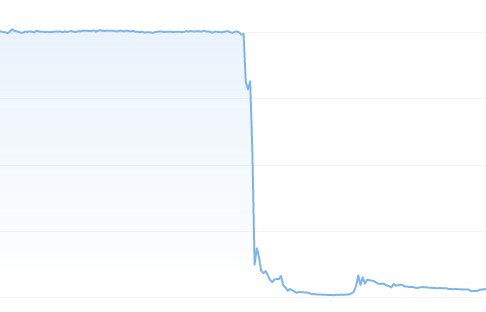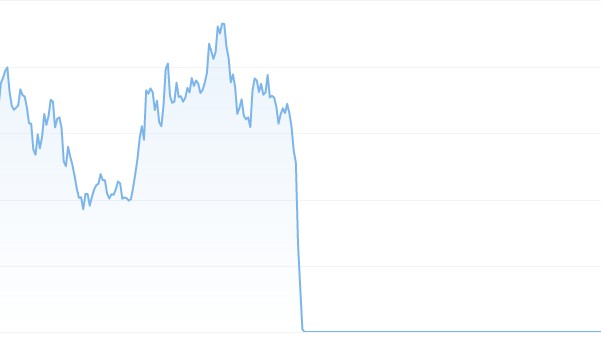FTX and UST Disasters: Not a Blockchain Issue
The Fall of UST
In May 2022, the Terra LUNA and UST stable coin system suffered a complete collapse. Within a few days, the value of UST dropped from $1 to just a few cents and has not recovered since then:

What is a Stable Coin
A stable coin is a cryptocurrency that is pegged to a fiat currency, such as the US Dollar, Euro, or Swiss Franc. One TerraUSD (UST) is designed to have a value of exactly $1 and is therefore backed by assets worth the value of all issued stable coins. The main advantage of a stable coin is its stability, as it can be used as a one-to-one replacement for the reference currency. As it is based on the blockchain and accessed only through a private key and public address, the owner of a stable coin remains anonymous, similar to cash. This allows individuals to hold both volatile cryptocurrencies and stable coins pseudonymously and trade between them without undergoing any KYC identification process.
The Unstable Equilibrium
TerraUSD is structured differently from other stable coins. Instead of being backed by US dollars or independent assets, it is backed by the Terra LUNA token. The idea behind this was to mint and burn LUNA tokens in order to maintain the value of TerraUSD. When the value of LUNA tokens increases, more UST is minted and when the value of LUNA tokens decreases, UST is burned or new LUNA tokens are minted until the total value of LUNA tokens equals the amount of UST in circulation. This is known as the «burn and mint equilibrium». However, the value of LUNA is determined by an unregulated market, where each participant pays whatever they are willing to pay for a token. This system failed when the value of LUNA dropped and people lost trust in the system, leading to a flood of LUNA tokens on the market and a decrease in value. As a result, the value of TerraUSD also dropped as it lost its backing.
The following chart shows the Terra LUNA token before and after May 2022, demonstrating how the “equilibrium” caused both assets to plummet:

Lessons Learned
While issuing stable coins can be a great idea, it is important to carefully choose the right one. There are reliable stable coins, such as Sygnum Bank‘s DCHF, which is based on the Swiss franc and backed by assets. However, these types of stable coins are issued in a regulated environment and require owner identification, making them less suitable for use in an unregulated market.
The challenge is finding a way to connect real-world money with virtual cryptocurrencies. While the blockchain provides trust without a central authority, there is no corresponding mechanism in the real world. Someone must verify and approve the existence of sufficient backing assets. In regulated banks, this role is played by a government institution. However, these institutions also impose strict identification requirements on users. So to keep the freedom of unregulated markets, a compromise is required.
In conclusion, the collapse of UST was not due to a problem with the blockchain, but rather to the flawed design of the stable coin itself. It is important to thoroughly research and understand the backing and structure of any stable coin before using it.
Tether (USDT) is currently the largest stablecoin by market capitalization, with a total of 65.362.681.003 tokens and a market cap of $66 billion at the time of writing. The issuer claims that each token is backed by an equivalent amount of traditional fiat currencies and receivables, but there has been no independent audit to confirm this. USD Coin (USDC) is also a popular stablecoin, with a market cap of $44 billion. The issuer claims that the coin is «backed by fully reserved assets», which are attested to by Grant Thornton LLP but not independently audited. Other popular US dollar-based stablecoins include Binance USD (BUSD), Dai (DAI), Frax (FRAX), Pax Dollar (USDP), TrueUSD (TUSD), and Gemini Dollar (GUSD). It is important to carefully consider the trustworthiness of each stablecoin before deciding which one to use, and to diversify your investments to minimize risk.
FTX, Potentially a Criminal Case
The Terra LUNA UST ecosystem has to be criticized for its lack of intelligence, but it appears that FTX may have been engaging in fraudulent activity. FTX was a large cryptocurrency exchange established in 2019 that held assets on behalf of customers in a custodial capacity. These assets were supposed to be securely stored and kept separate, but it seems that the company used customer assets to back its own token. Reports indicate that significant amounts, potentially totaling billions of dollars, were transferred by FTX founder Sam Bankman-Fried from the exchange to Alameda, a company he owns. This action bears a resemblance to the issues with the UST ecosystem and resulted in a loss of confidence and a decline in the value of the collateral. It appears to be a similar mistake, but this time with possible criminal intent.
And What About the Hack?
There was a hack at FTX, but many details about the incident remain unclear. While the hack itself may have caused harm, it appears that the main damage was caused by the owner of FTX, who allegedly moved large customer funds from the exchange to Alameda in an illegal and fraudulent manner. This action has likely caused significant harm to affected customers, and highlights the importance of exercising caution when entrusting assets to any financial institution. It is important for users to stay informed and take necessary precautions to protect their assets, but in this case, it seems that the actions of the FTX owner were the primary cause of damage.
Conclusion
Neeither the failure of Terra’s LUNA token nor the bankruptcy of FTX can be attributed to flaws in the blockchain technology itself. Instead, they highlight the importance of following sound economic principles, even in the virtual economy of the blockchain. There are two ways to build trust in the blockchain: through external oversight and regulation, or through the use of smart contracts, cryptography, and zero-knowledge proofs. Pacta has chosen the latter approach, as we believe that trust without a traditional trustee is one of the key value-adds of Ethereum’s blockchain technology.

